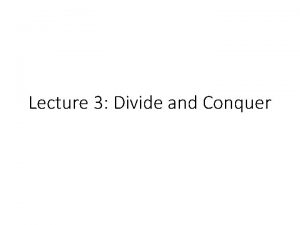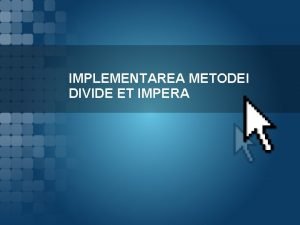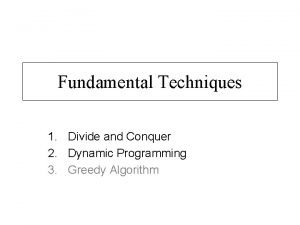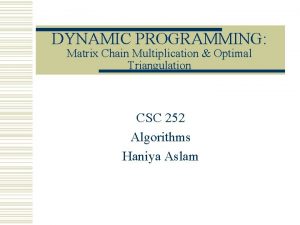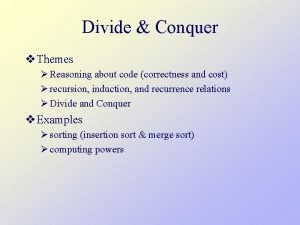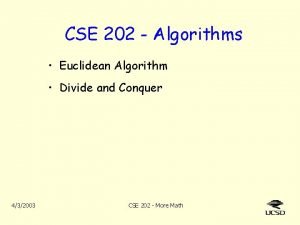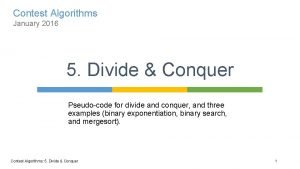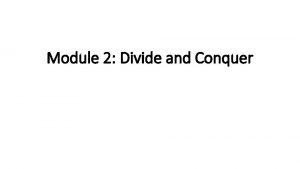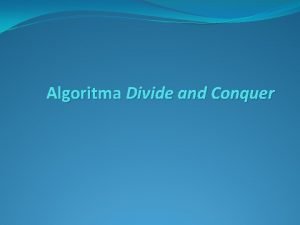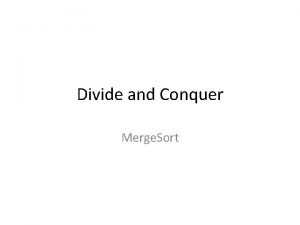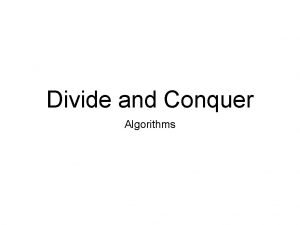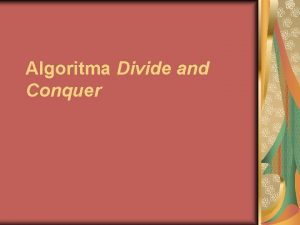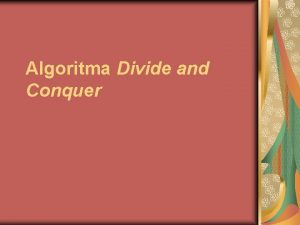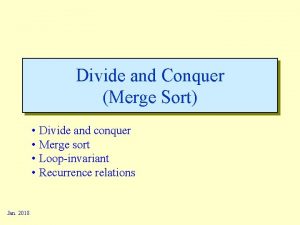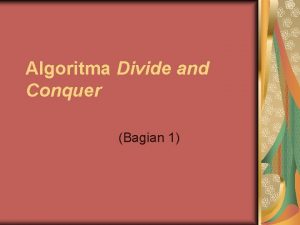Module 2 Divide and Conquer Divide and Conquer












- Slides: 12

Module 2: Divide and Conquer

Divide and Conquer

Algorithm DAnd. C(P) {. if Small(P) Then return S(P); else { divide P into smaller instances P, P'2, . . . , Pfc, k > 1; Apply DAnd. C t, o each of these subproblems; return Combine(DAnd. C(Pi). DAnd. C(P 2)) DAnd. C(Pfe)); } }

Solving recurrence relation using Master theorem Here a = 2, b = 2, and d = 0; hence, since a >bd,

Binary Search • Problem definition: • Let ai, 1 ≤ i ≤ n be a list of elements that are sorted in non-decreasing order. • The problem is to find whether a given element x is present in the list or not. – If x is present we have to determine a value j (element’s position) such that aj=x. – If x is not in the list, then j is set to zero.

Iterative Binary search algorithm

Analysis • Time Complexity Recurrence relation (for worst case) T(n) = T(n/2) + c

Pros / Cons • Advantages: – Efficient on very big list, – Can be implemented iteratively/recursively. • Limitations: – Interacts poorly with the memory hierarchy – Requires sorted list as an input – Due to random access of list element, needs arrays instead of linked list.

Max Min • Problem statement • Given a list of n elements, the problem is to find the maximum and minimum items. • A simple and straight forward algorithm to achieve this is given below.

Algorithm : Max. Min

Analysis - Time Complexity

 Divide and conquer advantages and disadvantages
Divide and conquer advantages and disadvantages Divide and conquer greedy algorithm
Divide and conquer greedy algorithm Delaunay triangulation divide and conquer algorithm
Delaunay triangulation divide and conquer algorithm Delaunay triangulation divide and conquer algorithm
Delaunay triangulation divide and conquer algorithm Counting inversions divide and conquer
Counting inversions divide and conquer Suma elementelor pare divide et impera
Suma elementelor pare divide et impera Divide and conquer
Divide and conquer Dynamic programming vs divide and conquer
Dynamic programming vs divide and conquer Prove correctness of divide and conquer
Prove correctness of divide and conquer Skyline problem divide and conquer
Skyline problem divide and conquer Skyline problem divide and conquer
Skyline problem divide and conquer Euclidean algorithm divide and conquer
Euclidean algorithm divide and conquer How to divide in pseudocode
How to divide in pseudocode




